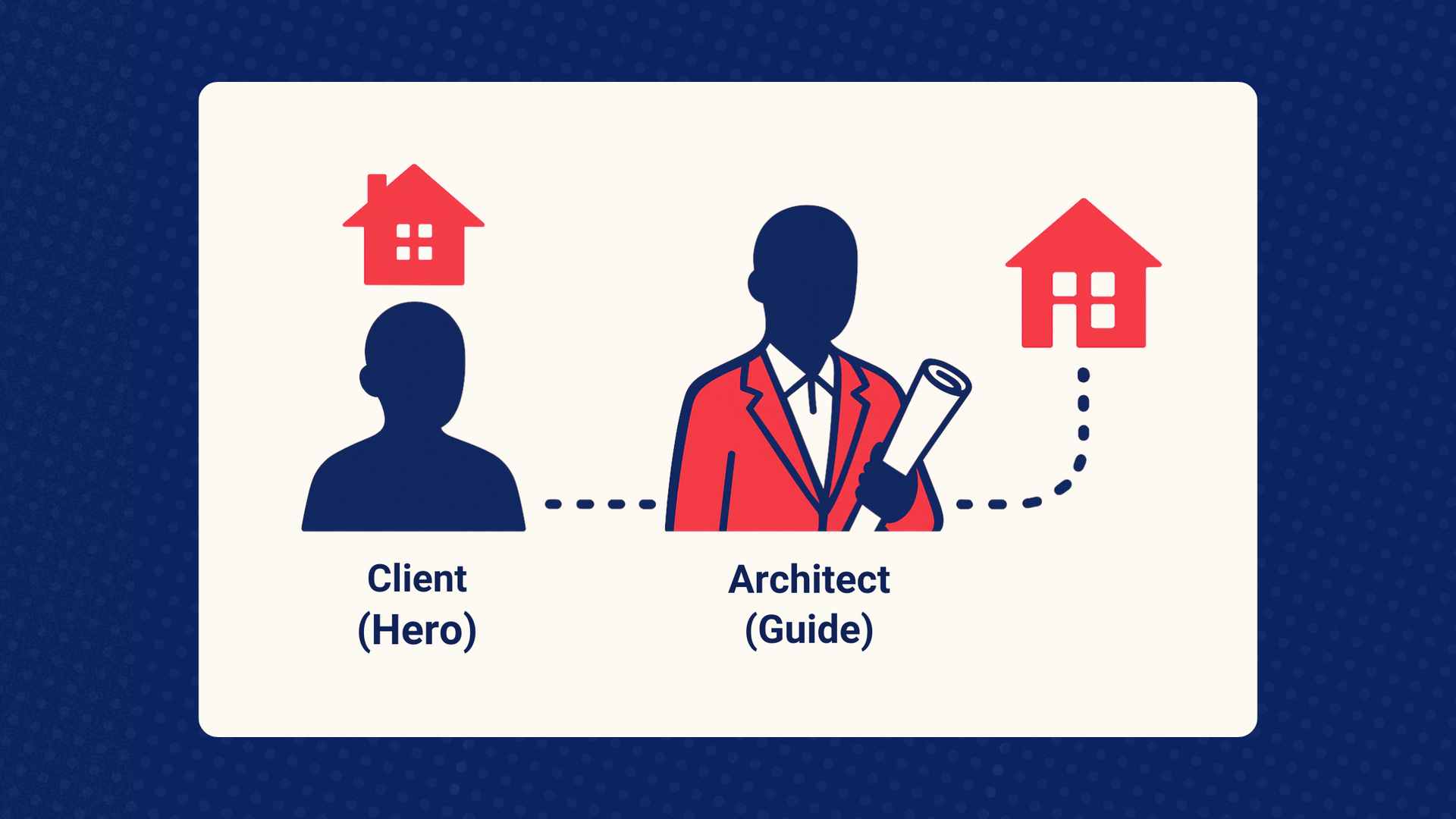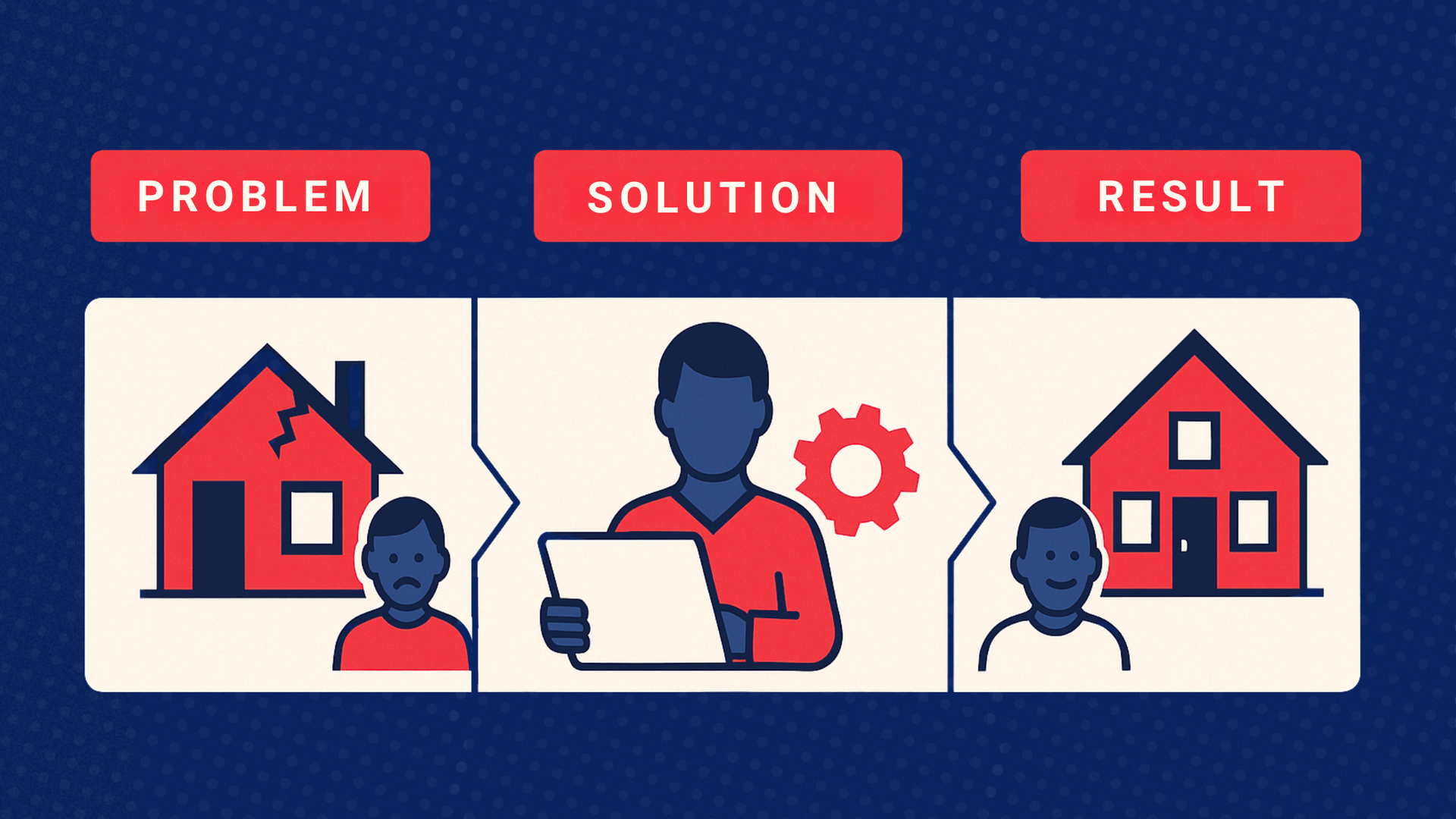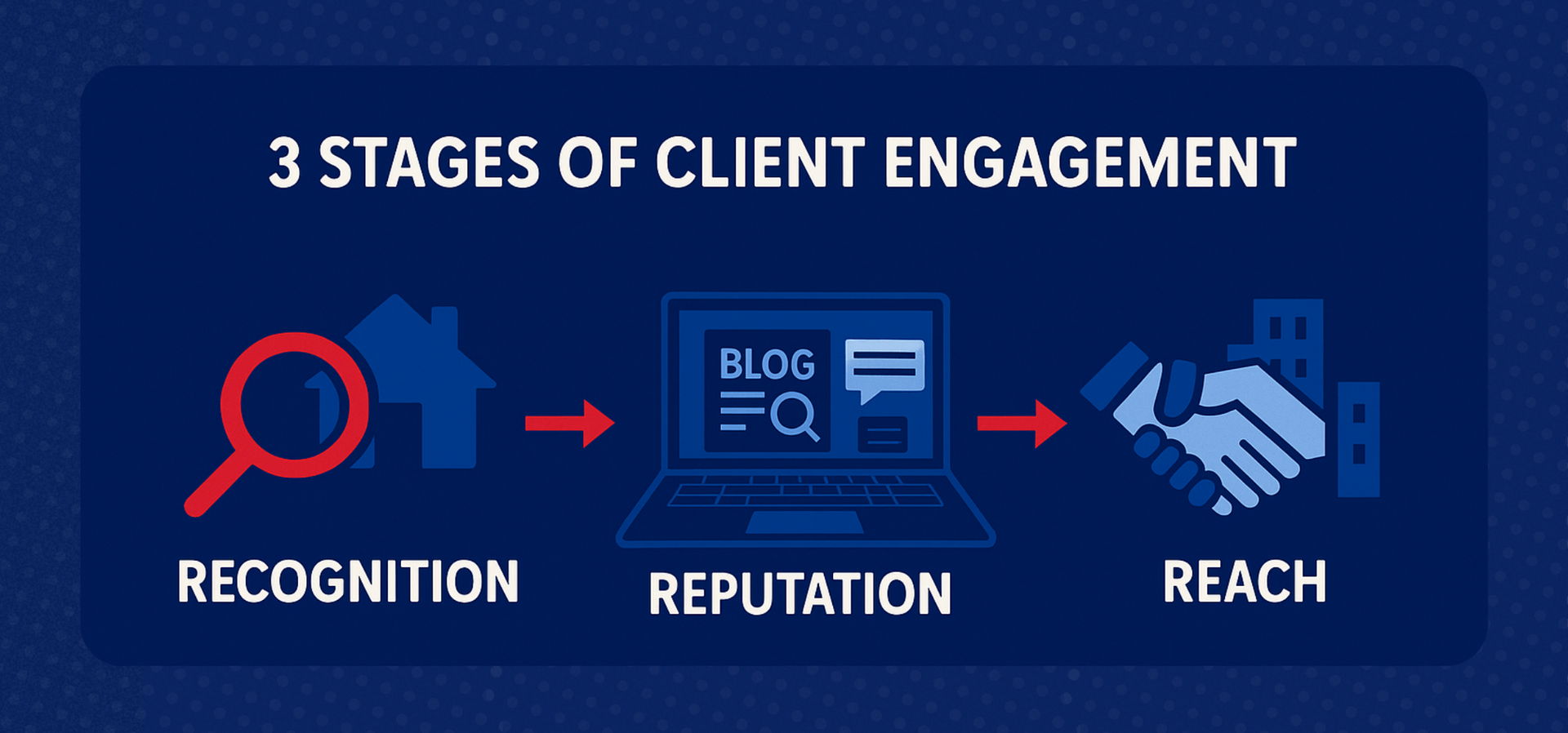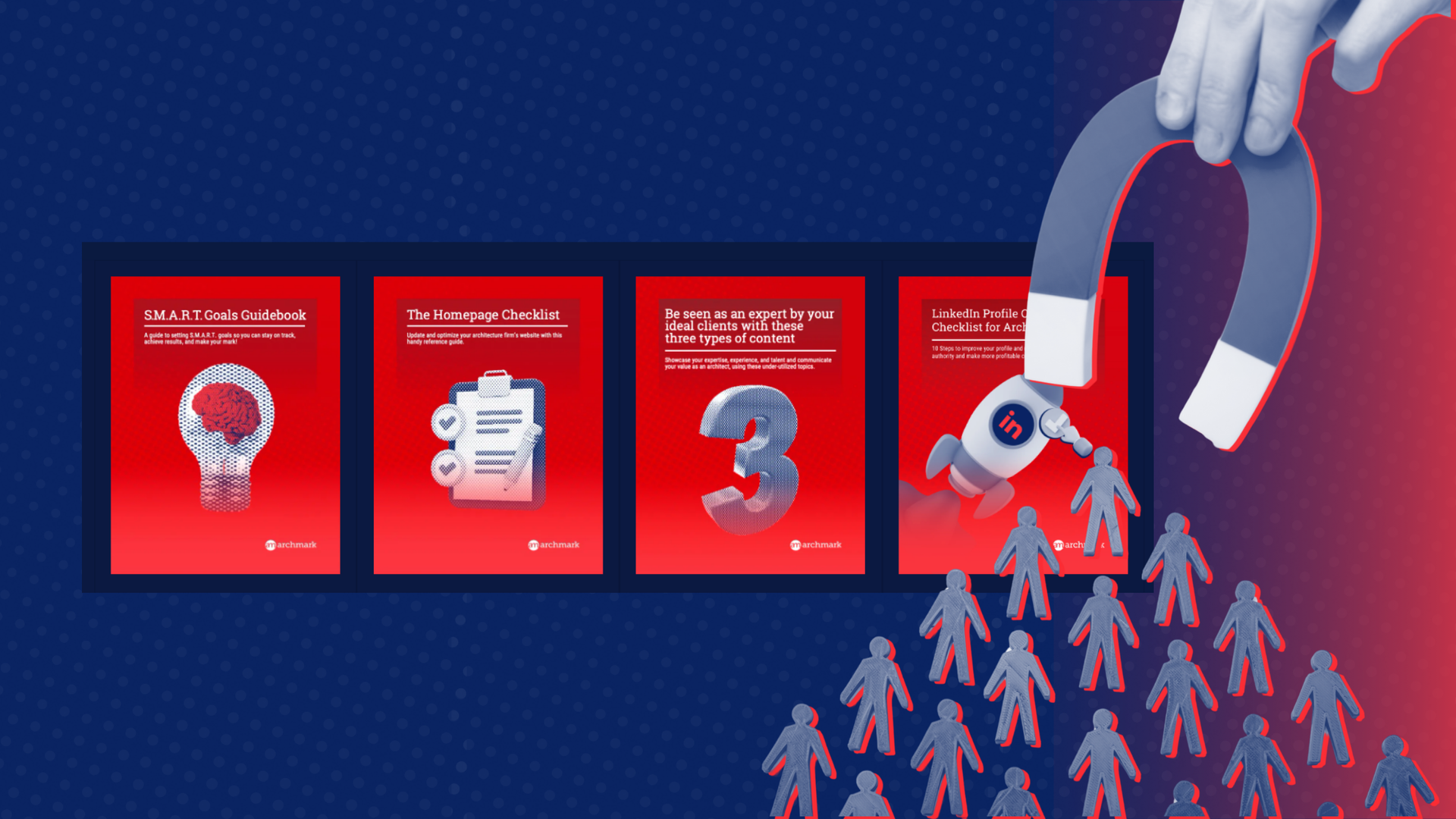StoryBrand for Architects: Architecture Firm Branding Guide
Architecture Firm Branding with StoryBrand: A Blueprint to Stand Out—and Always Get Picked
In the world of architectural design, many firms struggle to communicate their value effectively. They showcase beautiful portfolios, list impressive credentials, and highlight prestigious awards—yet potential clients often remain unconvinced.
It's like building a stunning facade with no clear entrance: impressive to look at, but nobody knows how to get inside.
The missing element? Storytelling that puts the client at the center of your brand narrative.
At Archmark, we've spent years helping architecture firms crack the code on effective branding and marketing.
Our co-founder Bryon McCartney, a certified StoryBrand coach, recently outlined the groundbreaking framework that's transforming how architects connect with their ideal clients—and it all starts with a simple but radical shift in perspective that goes beyond logo design and visual identity.
Why Traditional Architectural Design Marketing Falls Short
Traditional marketing in the architectural design world often misses the mark because it focuses on the wrong story.
Firms lead with their design philosophy, showcase their most photogenic 3D renderings and imagery, and list their awards—essentially creating a professional autobiography.
But here's the thing: Your potential clients aren't looking for your life story. They're looking for someone who understands their story and can help write the next chapter.
This disconnect explains why so many talented architects struggle to attract their ideal projects despite having stunning portfolios and a recognizable brand identity.
When your marketing is all about your achievements rather than your client's aspirations, you're essentially having a one-sided conversation.
And nobody likes those—not at parties, and certainly not when they're about to invest in a major project.

Breaking the "We Problem" in Architecture Marketing
By now most of us have heard how important storytelling is to marketing. We’ve heard things like: stories are remembered up to 22 times more than facts or figures alone.
Despite this, and working to integrate storytelling into their marketing, some architects still struggle to make their marketing work.
One of the most common mistakes architects make is what we call the "we problem"—making their branding for architects all about themselves.
It's like going on a first date and only talking about your awards, your degrees, and that time you won a paper airplane contest in third grade. Fascinating? Maybe. Effective? Not so much.
When it comes to how you market your firm, we recommend a specific ratio of “me” to “you”: Limit the talking about yourself 20 to 25% of the time. So for every 'I' or 'we,' you'd have three 'you,' 'yours,' or 'theirs.'
This shift in language creates an immediate connection with potential clients. Instead of reading about the architect's achievements, clients see how those achievements translate into solutions for their specific challenges.
This approach should permeate everything from your website to your business card design.
The Fundamental Shift: From Hero to Guide
Here's a plot twist worthy of Hollywood: You're not the hero of your marketing story. (Sorry to step on your cape.)
The most crucial mindset shift for architects is understanding their role in the client's story. As we explain to our clients, "The architect is the guide who helps the hero (their client) get what they want."
This framework draws from Joseph Campbell's work on mythology and storytelling, where the guide (think Yoda or Gandalf) helps the hero (Luke Skywalker or Frodo) overcome challenges and achieve transformation.
In architecture, the client is always the hero of the story, while the architect serves as the experienced guide who helps them navigate the journey.

The StoryBrand Framework: Seven Elements of Effective Architectural Storytelling
The StoryBrand framework includes seven essential elements that architects should incorporate into their branding efforts—think of them as the load-bearing walls of your marketing structure:
1. The Hero (Your Client): The central character trying to achieve something (hint: it's not you)
A downloadable guide that helps prospective clients understand realistic budgeting for their specific type of architectural project.
2. The Problem:
Three levels that clients face:
- Internal: How they feel about their situation ("Why is choosing tile more stressful than my day job?")
- External: The tangible obstacles in their way (zoning boards, HOAs, and other architectural nemeses)
- Philosophical: The sense that "it shouldn't be this hard" (spoiler alert: they're right)
3. The Guide (The Architect): Demonstrating empathy and competence (yes, both—you can't just pick one)
4. The Plan: A clear path to solving the client's problem.
5. The Call to Action: The specific first step to begin the journey (can boost conversions by up to 161%)
6. The Negative Stakes: What happens if they don't act (continued kitchen envy at dinner parties)
7. The Positive Stakes: The transformation they'll experience (hosting said dinner parties with joy)

How to Implement StoryBrand in Your Firm Today
Applying StoryBrand to your messaging isn’t about slapping a new tagline on your homepage and calling it a day. It’s about weaving a clear, client-centered narrative through every touchpoint you publish.
This is where the framework stops being theory and starts doing heavy lifting in your project descriptions, proposals, emails, and even those “about us” blurbs that usually put people to sleep.
Think of this section as your field guide: practical, fast-moving moves that shift your copy from “look what we did” to “here’s how we’ll get you where you want to go.” Ready to put the cape away and pick up the compass? Let’s go.
Write Better Project Descriptions Using the PSR Formula
Instead of listing technical specifications that would make an engineering manual jealous, we recommend using the Problem-Solution-Result (PSR) formula for project descriptions:
- Problem: What motivated the client to seek an architect? (Besides their spouse threatening to move out if the kitchen wasn't updated)
- Solution: How you solved their problem and overcame obstacles
- Result: The transformation achieved or tangible outcomes delivered
This approach transforms dry project descriptions into compelling narratives that prospective clients can relate to and envision for their own projects.
Because let's face it, nobody ever said, "Wow, that R-value specification really speaks to my soul."
Understanding Emotional Drivers Through Strategic Questions
- "Why do you want to do this project?"
- "How do you want to feel when the project's over?"
- "How do you feel now?"
- "What are you not able to do currently?"
The Three Stages of Client Engagement
1. Recognition (Awareness) How people discover you exist through SEO, referrals, and local presence (aka "The Meet-Cute")
2. Reputation (Interest): Building credibility through blog articles, case studies, and demonstrating understanding of their problems (aka "The Getting-to-Know-You Phase")
3. Reach (Decision): Providing testimonials, case studies, and proof that you can deliver results (aka "The Happily Ever After")
Getting Started: Practical Quick Wins for Architects
1. Audit your language: Review your website, proposals, and social media for the balance of "we/us/our" versus "you/your/their" (spoiler: if it sounds like a royal decree, you're doing it wrong)
2. Clarify your homepage: Ensure visitors immediately understand what you do, how you help clients, and what their next step should be (confusion is not a design aesthetic)
3. Record client conversations: Start building a knowledge base of client concerns and motivations (with permission, of course)
4. Rewrite one project description: Use the PSR formula to transform a technical description into a client-focused story (your specifications can take a back seat)
Embracing AI While Maintaining Authenticity
Real-World Results That Prove the Power of Story
Brand Boldly—Guide Heroically
Frequently Asked Questions
Is effective branding for architects just about having a nice logo and visual identity?
While a professional logo and cohesive visual identity are important, effective branding goes far deeper. True architecture brand success comes from clearly communicating how you solve client problems. Your brand identity should reflect your role as a guide in your client's journey, not just showcase aesthetic preferences. Think of your logo as the front door—it needs to be inviting, but what matters most is what happens once clients step inside.
We just went through a rebranding process. Do we need to start over with StoryBrand?
Not at all! StoryBrand enhances your existing brand identity by adding a powerful messaging framework. Whether your visual identity is playful, minimalist, or bold, the StoryBrand approach helps you communicate more effectively with your ideal clients. Think of it as adding a strong foundation under your beautiful new design.
How do we develop an authentic brand persona for our architecture firm?
Start by recording and analyzing client conversations to understand their real concerns and motivations. Your brand persona should reflect your firm's unique way of solving client problems, not just your design philosophy. Avoid generic "innovative designer" language—instead, focus on specific ways you guide clients through their journey.
Should our business cards and marketing materials focus on our awards and credentials?
Your business card and other materials should primarily communicate how you help clients, with credentials serving as supporting evidence. Instead of leading with "Award-winning architect," try something client-focused like "Transforming your vision into spaces that work." Include credentials, but frame them as proof of your ability to guide clients successfully.
How important is 3D visualization and imagery in architecture branding?
While stunning 3D renderings and photography are valuable for showcasing your work, they should support your story, not be the entire story. Use imagery strategically to illustrate how you solve problems and create transformations. Remember: clients hire you for what your designs will do for them, not just how they look.
How do we balance being recognizable with being client-focused?
A recognizable brand doesn't mean talking about yourself constantly. Build recognition by consistently addressing specific client problems across all touchpoints. When you become known as the firm that truly understands and solves certain challenges, you'll be both recognizable and client-focused.
What's the biggest mistake architects make in their branding efforts?
The biggest mistake is making their brand story about themselves rather than their clients. This shows up everywhere—from websites that lead with firm history to project descriptions that focus on technical specifications rather than client transformations. Remember the 75/25 rule: focus on your clients 75% of the time.












